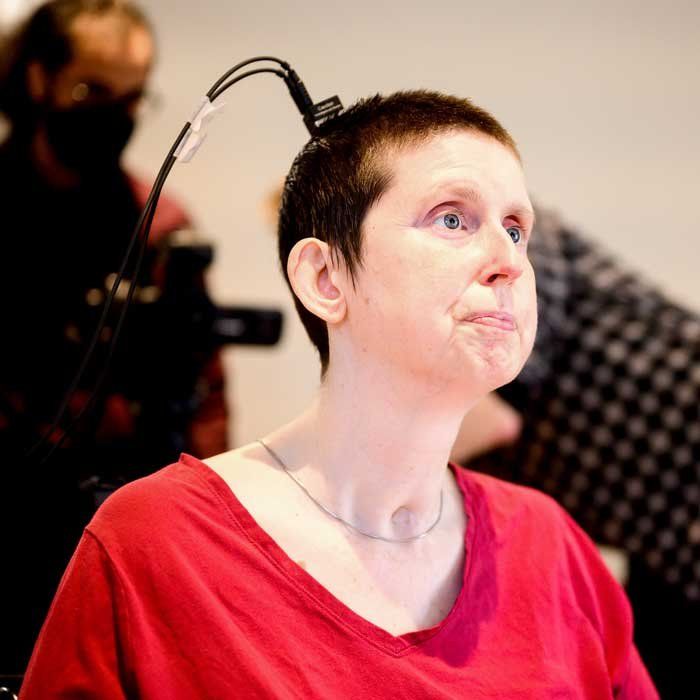For the next five years, Ann went to bed each night afraid she would die in her sleep. It took years of physical therapy before she could move her facial muscles enough to laugh or cry. Still, the muscles that would have allowed her to speak remained immobile.
“Overnight, everything was taken from me,” Ann wrote, using a device that enables her to type slowly on a computer screen with small movements of her head. “I had a 13-month-old daughter, an 8-year-old stepson and 26-month-old marriage.”

Today, Ann is helping researchers at UC San Francisco and UC Berkeley develop new brain-computer technology that could one day allow people like her to communicate more naturally through a digital avatar that resembles a person.
It is the first time that either speech or facial expressions have been synthesized from brain signals. The system can also decode these signals into text at nearly 80 words per minute, a vast improvement over the 14 words per minute that her current communication device delivers.
Edward Chang, MD, chair of neurological surgery at UCSF, who has worked on the technology, known as a brain-computer interface, or BCI, for more than a decade, hopes this latest research breakthrough, published Aug. 23, 2023, in Nature, will lead to an FDA-approved system that enables speech from brain signals in the near future.
“Our goal is to restore a full, embodied way of communicating, which is the most natural way for us to talk with others,” said Chang, who is a member of the UCSF Weill Institute for Neurosciences and the Jeanne Robertson Distinguished Professor. “These advancements bring us much closer to making this a real solution for patients.”
Ann’s work with UCSF neurosurgeon Edward Chang, MD, and his team plays an important role in helping advance the development of devices that can give a voice to people unable to speak. Video by Pete Bell



